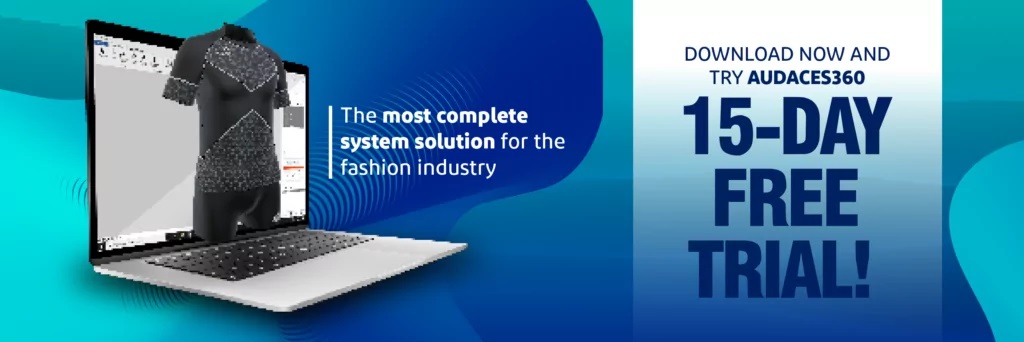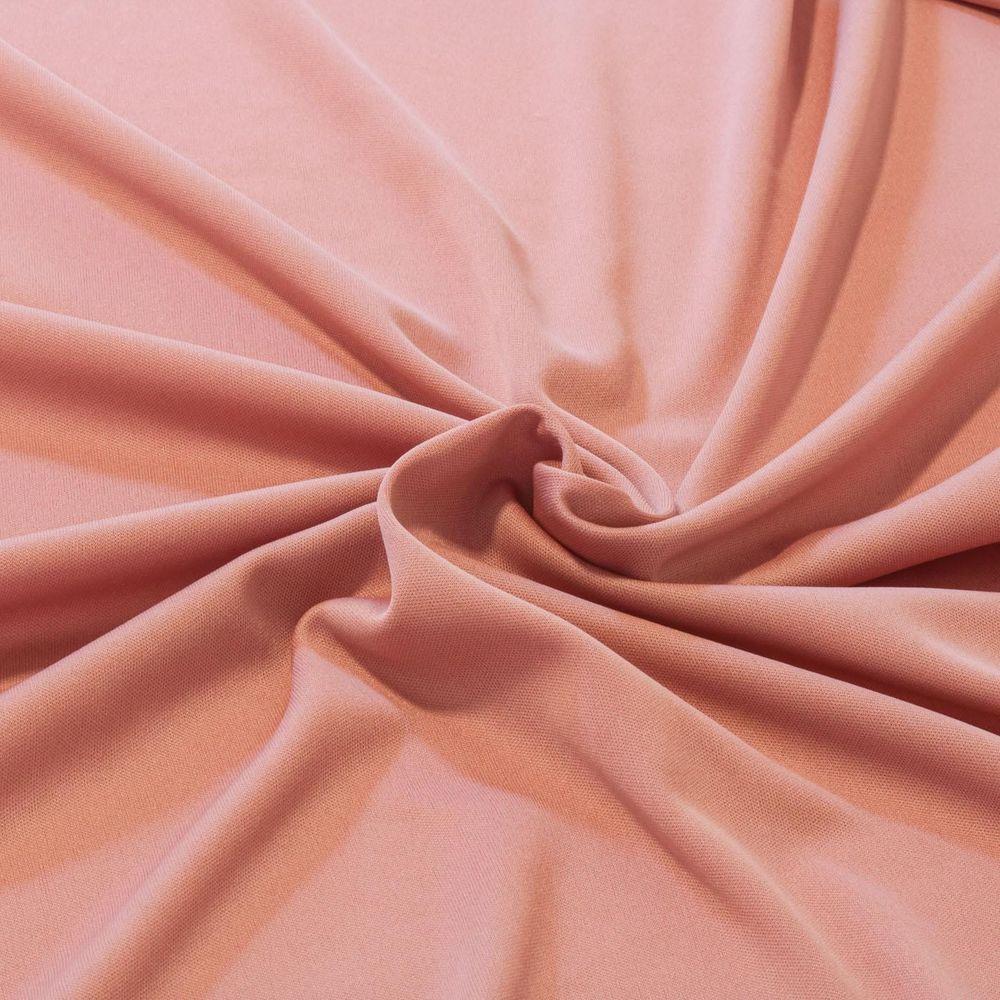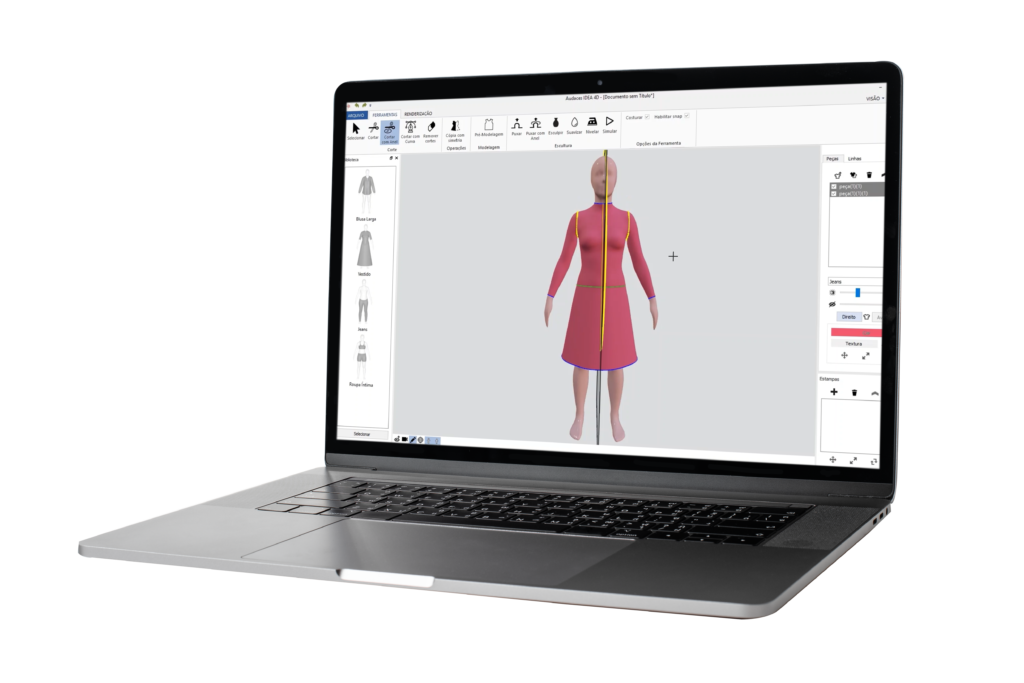Summary:
- Known as Lycra, helanca fabric is highly versatile;
- Helanca is utilized in the creation of various clothing types, from linings to casual and beachwear;
- Test the fabric’s fit by using Audaces360 multi-solution’s 3D modeling environment! Sign up for a free trial today.

Helanca is a versatile fabric commonly known as Lycra®, which is one of the main brands responsible for its production.
The creation of helanca yarn dates back to 1931 when Rudolph H. Kägi first manufactured it, initially applying it to viscose. The manufacturing rights were later sold to the Swiss company Heberien & Co. the following year.
But do you really know what helanca fabric is and how to best use it? Discover all this and more in this post!
What are helanca fabric, its composition, and its uses?
Helanca fabric, composed of polyester and polyamide, stands out for its relaxed nature, setting it apart from other fabrics like satin and elastane. Its wide range of applications includes making linings and various types of clothing.
Sumário
The fabric’s elastic properties enhance comfort and add to its versatility, allowing for easy movement and a seamless fit, eliminating any stiffness.
Learn more: 9 fabrics with the perfect fit to use in your fashion collection
What are the characteristics of this type of fabric?

Helanca is a highly malleable type of fabric, boasting excellent elasticity and flexibility, which allows it to perfectly adapt to all body types.
As a 100% synthetic fabric, it has a high sweat retention rate, making it beneficial for perspiration in warmer weather.
Additionally, it proves to be an excellent element for heat retention during the winter.
Helanca mesh is available in various versions, with different weights, ranging from lighter to heavier options.
While it may knead slightly, it maintains its exceptional durability over time.
Learn more: How does technology in fashion impact the textile industry?
How to use helanca fabric in your fashion collection?
Helanca fabric finds widespread use in fashion collections, particularly in the production of women’s and men’s pants, notably in school uniforms.
However, its versatility extends to various other clothing categories, including sports attire like football shirts and even underwear.
In the realm of fashion, helanca fabric serves as a valuable asset for lining garments.
This technique involves internally lining a piece with another fabric to enhance its durability and adaptability.
This process is visible in a wide range of products, from clothing and shoes to mattresses and upholstery.
Typically, helanca fabric acts as the lighter and more flexible inner layer, while a sturdier and more durable fabric becomes the outer side.
Here are some applications of helanca fabric in garments:
- Casual Wear: Ideal for creating well-fitted pieces like blouses, pajamas, dresses, and uniforms;
- Festive Attire: Often used as lining for long dresses of various models, adding to the overall appeal;
- Beach or Poolside Fashion: From bikinis, bathing suits, and swimming trunks to beach cover-ups, helanca proves suitable for beachwear;
- Sportswear: Tops, leggings, shorts, skirts, dresses, and various other sportswear items benefit from the attributes of helanca fabric.
Learn more: Check out 3 infallible tips to assemble a fashion product mix
Anticipate fabric fit with Audaces Software

In the world of fashion design and production, fit testing of fabrics like helanca is crucial, particularly when used for lining purposes.
Precision is essential to ensure that stylists can accurately plan and execute their designs, meeting the initial expectations seamlessly.
Fortunately, modern technology has introduced innovative solutions to streamline the production process in a 100% digital manner, offering increased accuracy, speed, and cost-effectiveness.
Among these advancements are software solutions designed to enhance garment creation and fabric fit prediction processes.
Let’s explore some of these tools:
Audaces Fashion Studio
Audaces Fashion Studio is cutting-edge software that empowers you to create stunning garment models in a dynamic three-dimensional environment, streamlining the sketch development process and saving valuable time.
Beyond its 3D capabilities, Audaces Fashion Studio integrates the creation and production stages of your fashion business, optimizing efficiency and collaboration.
With Audaces Fashion Studio, you can:
- Create three-dimensional outfits without the need for manual development;
- Visualize your choice of fabrics, colors, and finishes on each model;
- Showcase 3D designs to clients for visual approval;
- Avoid wasting time, money, and materials through efficient design processes;
- Approve model variants with ease;
- Seamlessly integrate your operations in real-time with pattern editors and more.
Audaces Idea
For those seeking greater efficiency and improved communication during the creative process, Audaces Idea offers the perfect solution.
This software standardizes and enhances precision in various processes, making it an indispensable tool for fashion professionals.
With Audaces Idea, you can enjoy a 360º view of your collection, test and refine models, estimate costs, and seamlessly integrate technical drawings with tech packs.
Audaces 3D
Struggling with tight deadlines, creation issues, and constant rework while designing your fashion pieces? Look no further than Audaces 3D – your company’s ally in putting an end to collection development failures.
Audaces 3D is specifically designed for modelers and technical development professionals, empowering them to:
- Approve drawings and modeling;
- Confirm the fit and wearability of garments;
- Digitally approve the first prototype, minimizing the need for physical samples;
- Drastically reduce the number of sample garments required for testing;
- Save time and costs associated with traditional prototyping;
- Foster more sustainable processes in your fashion production;
- Create stunning images for marketing and sales purposes, captivating your audience;
- And more!
Curious to explore other fabric types, besides Helanca? Download our free e-book now and discover more:
FAQ
Helanca fabric is composed of polyester and polyamide, known for its gracefulness compared to other fabrics like satin and elastane.
Helanca fabric is malleable, 100% synthetic, and has a high sweat retention rate, aiding with perspiration and heat retention.
Helanca fabric is highly versatile and can be used in various clothing pieces, including casual, festive, beachwear, and sportswear.






